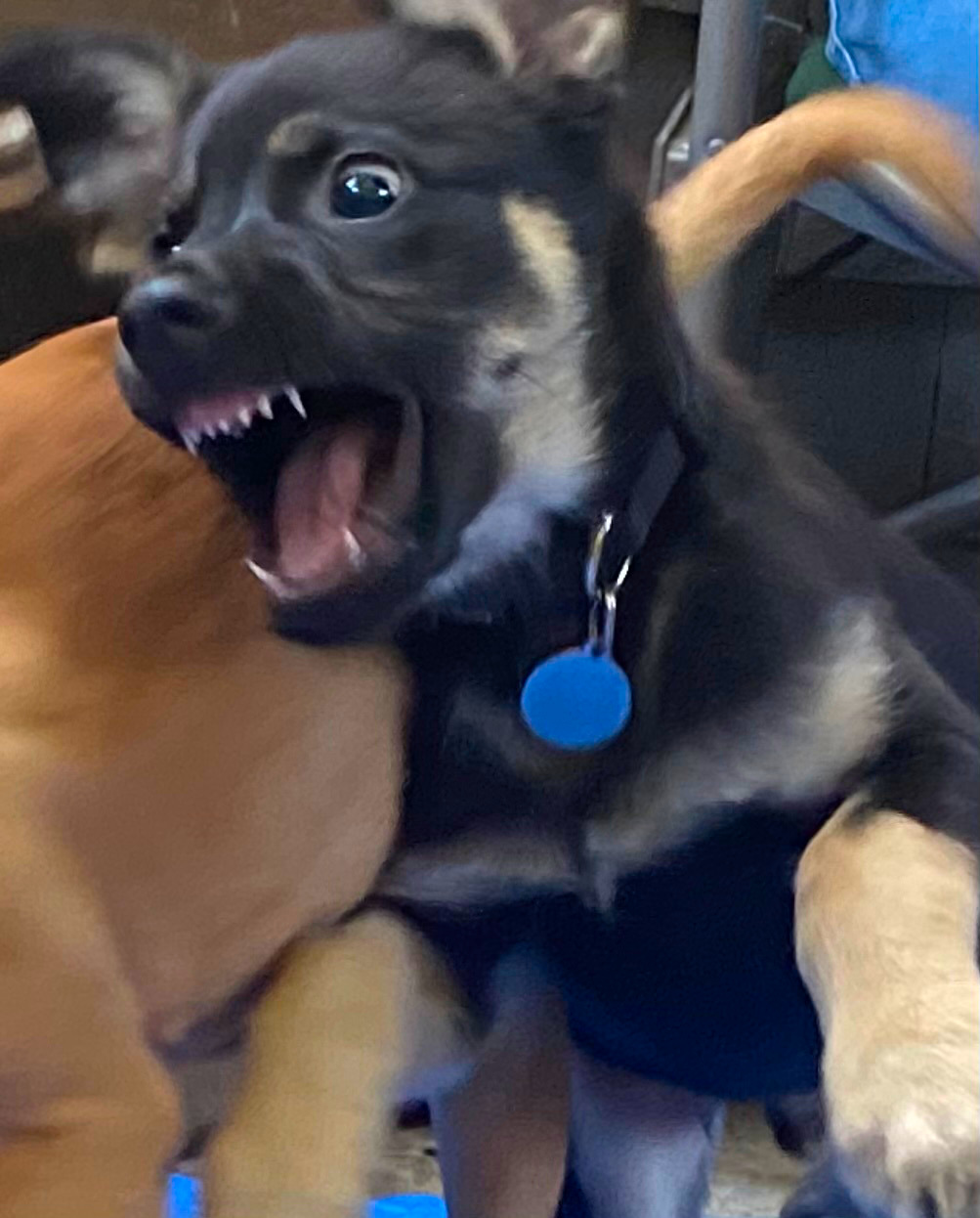How to Speak Dog: Translating the Full Body Shake

You’ve probably seen your dog do a full body shake hundreds of times. It looks like a dog trying to dry off after a bath except they’re not wet. Recognizing and understanding this natural and involuntary canine behavior can give you valuable insight into your dog's feelings and help you know which situations may be challenging for your pup.
Dogs don't use words to communicate, but they are "talking" to each other and to us all the time with their body language. A full body shake is a self-soothing behavior that releases tension. It’s a physiological process that helps return the body to homeostasis, in which biological systems maintain stability while adjusting to changing external conditions.
In fact, shaking it off has been shown to lower a dog’s pulse (Dog Field Study 2019), leading to a more relaxed state. You probably do something similar after a stressful or exciting event, like taking a deep breath or giving a big sigh.
This may be after meeting another dog or a human, hearing a loud noise, seeing something scary, or just being in a situation where they are unsure or hesitant.
During PlayDogs frequently take breaks when playing, and shaking is a good way to lower arousal. For example, if a chase or wrestling game gets too intense or rowdy, you may see both dogs step away and shake before resuming play.
Calming SignalA shake off can function as a communication tool between dogs, a calming signal that helps de-escalate a tense encounter: "No worries over here, I'm just gonna walk away and shake it off." Sometimes you may see one dog shake and the other will shake in response.
Paying attention to when your dog does a shake off can help you know when your dog is uncomfortable or anxious. We expect our dogs to happily tolerate everything in our busy human world, from strangers touching them to getting bathed to being barked at by other dogs, often while leashed so they cannot move away. Frequently, we miss subtle signs of stress and then become alarmed when the dog feels the need to ramp up their communication by barking, growling, lunging, or snapping.
Shaking off usually occurs after a stressful event, so you may not know your dog was concerned or aroused at the moment it’s happening. But taking note of the behavior will help you prepare for, or avoid, future challenging situations.
Shaking it off is a good thing! It means your dog is self-regulating their behavior rather than barking or lunging when upset or worried. When they engage in this stress-relieving skill, give feedback such as praise or a treat, and, if needed, encourage your dog to move away to create distance from the stressful thing.
Advocating for your dog means paying attention to and acknowledging your dog's state of mind as you both move through the world. Being able to translate a shake off is an important skill for all humans lucky enough to have a fur-bearing friend in their lives.

